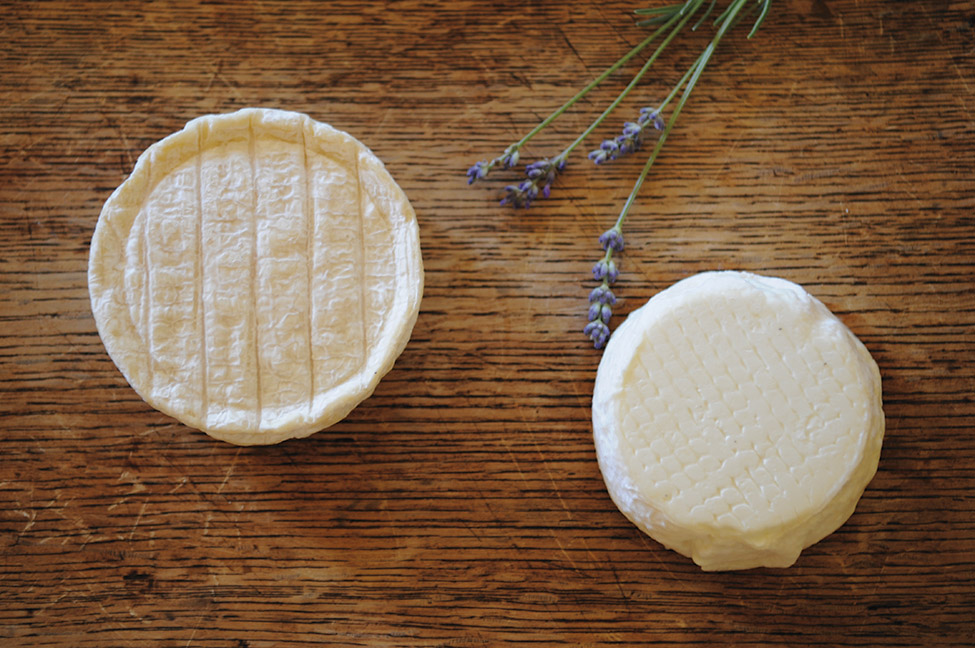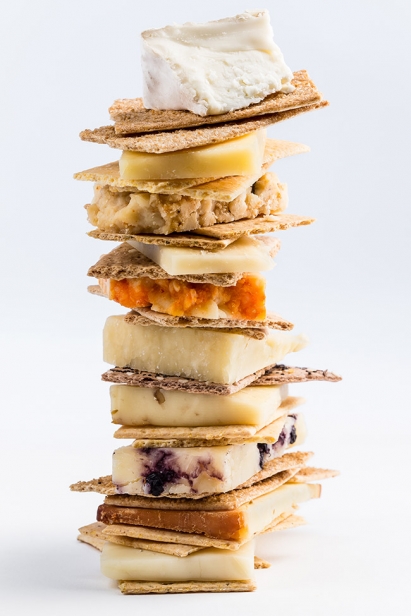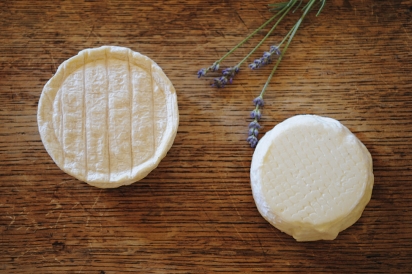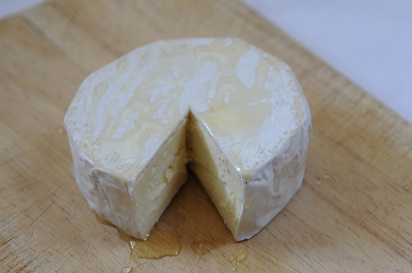Big Cheese
Unlike the medieval creameries and ancient shops of France, the Cheese Traveler (located at 540 Delaware Avenue in Albany), the region’s most beloved destination for a curated selection of high-end edibles, has only been around since 2012.
“You really can’t compare Europe and America in some ways, because our weather and topography are different,” says Eric Paul, owner and head monger at the Cheese Traveler. “The types of grass that grow here and the altitude cows or goats consume them at are completely different. Yes, you can make an Alpine or Camembert-like cheese in New York, but they will taste different here because our flora and terrain are different. You may also have a completely different type of cow. Different cheeses are the product of economic, cultural and geographic conditions. In parts of Spain and Italy, goat and sheep cheese dominate because the animals can tear foliage off of trees and bushes, which grow in the high, arid lands. Also, in Europe, you have hundreds of years of traditional methods and recipes being passed down.”
Well. When you put it like that....
“But that doesn’t mean revolutionary things aren’t happening in the cheese world,” Eric says reassuringly. “There are a handful of cheese producers in our backyard that are producing some of the world’s best cheese. The great thing about American cheese, as opposed to Europe, is that we have the freedom to try totally radical things, experiment with using different methods, styles, techniques and types of dairy hand-picked from around the world but created right here in the Capital District. Just a few years ago, I remember there were around 300 styles of cheese at the American Cheese [Society] competition. This year? There were more than 1,800.”
In the time since the Cheese Traveler opened, the culture of cheese has bloomed and ripened. So there is Big Cheese in New York that beautifully evokes the fearless, experimental, highly independent and eclectic nature of America since our founding. These three cheese makers in our backyard - all of whom produce a wide variety of cheese styles - are the ones that Eric most frequently takes out of the cheese case for clients......and for himself.
The Cheese Traveler is not only the Capital Region’s delicious answer to a Normandy-style farmers market (pick up their Tilldale CSA) but a corner specialty store and mini-restaurant as well, with classes, tastings and weekly events (their epic summer cookouts are the stuff of legend with almost offensively toothsome creations like the Tilldale farm burger, with gruyere, pate, and whole-grain mustard). The passion Eric and his team have for not only cheese products but the people who produce them and the public that consumes them is palpable, laudable and dare I say it? Very French.
But the little tables where customers can grab a handcrafted artisanal ale to sip with their cheese board or grilled cheese, not to mention their amazing seasonal cookouts and events? Very New York.
The difference between the cheese products and makers that the Cheese Traveler chooses to carry versus the generic grocery store resides not only in the price tag and flavor of the items, but in the nature of the relationship. It’s not just a commodity. The owner of the little specialty store in Albany knows and visits the places where the products he sells are produced. He shakes the hands of the farmers and makers, gazes at the animals, walks the land. Eric is reconnecting regional eaters to regional makers. His footprint is in the terroir, and he’s helping us find ours. We’ll all be eating better because of it.
Sugar House Creamery:
A farmstead creamery, which means it makes cheese from its own cows, Sugar House has 11 Brown Swiss cows and they milk nine of them, Eric explains. “They produce three cheeses: one made from raw cows milk and aged for several months, and two made from pasteurized cows milk, one aged for a few months and the other aged for just a few weeks. The cheese maker trained in France and at Consider Bardwell Farm in Pawlet, Vermont, and the experience comes through in the cheeses, which are sophisticated American takes on complex European styles. Phenomenal. The Alpine-style washed-rind cheeses Dutch Knuckle (ribald, dense, elastic, a bit of crunch), Pound Cake (supple, chewy, a bit of mellow nut) and Little Dickens (fudgy, tangy) all age underground. The creamery is run in Upper Jay by Margot Brooks and Alex Eaton.” SugarhouseCreamery.com
Cochran Farm 1790:
They source their goats milk from a neighboring Amish farm in Fort Plain, Eric says. “Gwen is the cheese maker with the technical background, and Patrick, a French expat, does the design and business sides. They produce all Alpine-style goats milk cheese, Loire style. They use a traditional French mold, Geotrichum candidum, to ripen their St. Johnsville cheese that hasn’t been seen [much until recently] in the U.S. The end product is wrinkled and looks like a big brain. It freaks some people out, so we do a play on it in October with a Zombie event. St. Johnsville has an incredibly chewy rind and a light, rich core.”
Four Fat Fowl:
This artisan creamery based in Stephentown, New York, focuses on one product: the St. Stephen, a handcrafted triple cream made from Jersey cows milk, with added cream. “It is enriched with cream at Four Fat,” Eric explains. “In France, double and triple crème specifies the amount of fat found in dry matter, in other words, if you remove all of the water. Camembert and brie are double creams, which means they are 50% to 73% fat in dry matter. Anything over that is a triple, and it means cream is used to enrich it. Four Fat Fowl’s triple crème is probably one of the best examples I’ve seen of the type, with a bloomy rind that adds a lot of depth to the richness. It is bursting with butter flavor and will pair perfectly with good old-fashioned toast.” FourFatFowl.com








